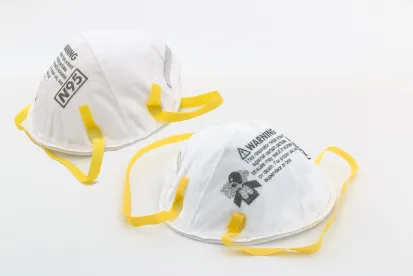Importers of personal protective equipment (PPE) should be careful to classify imported merchandise correctly, be prepared for the possibility of additional tariffs on products manufactured in China, and correctly declare and mark products with the country of origin. Since the Coronavirus Disease 2019 (COVID-19) pandemic entered the United States in early 2020, companies have been rushing to import masks, face shields, disposable gowns, thermometers, hand sanitizer, and disinfecting wipes to meet the sudden increased demand. Large orders and importations continue as the virus persists across the country. Timeframes to meet orders are typically short and importers may be caught off guard concerning U.S. Customs and Border Protection (CBP) compliance.
The Tariff Act of 1930 requires importers to use reasonable care to enter and classify imported merchandise. Importers must also take care to ensure they are using the most recent version of the U.S. Harmonized Tariff Schedule (HTS), and consider changes in nomenclature that can result in goods suddenly classified under new tariff provisions. For example, plastic face shields, as late as May 2020 were classified under Subheading 3926.90.9990 as “other articles of plastic.” More recently the International Trade Commission added a new provision, subheading 3926.90.9990 for “plastic face masks and shields.”
In addition, pursuant to Section 301 of the Trade Act of 1974 the Trump administration has imposed additional tariffs, at either 25% or 7.5% of the value of most products manufactured in China and imported into the United States. Following are related considerations for importers:
| 1. | Confirm whether the merchandise is on a Section 301 list. |
|
| 2. | Determine if the imported products can take advantage of one of the many exclusions from these additional duties granted by the Office of the U.S. Trade Representative (USTR). These exclusions are based on tariff classifications, modified by specific product descriptions. |
|
| 3. | Note that all exclusions have an expiration date, unless the exclusion approval has been extended. To date, no exclusions extend beyond Dec. 31, 2020. |
|
| 4. | USTR has yet to release the list of products that will be subject to a specific exclusion for COVID-19-related products. The Section 301 situation for products from China is fluid and requires constant monitoring. |
|
| 5. | The country of origin of all imported products must be declared to CBP at entry, and all products of foreign origin must be properly marked with the country of origin (usually, but not always, the country of manufacture). Because of the additional tariffs for Chinese products, CBP is especially attuned to the potential for transshipment and carefully monitors shipments for misdeclaration or mismarked goods. |
|
| 6. | Finally, most PPE articles, in addition to complying with CBP import requirements, must also comply with U.S. Food and Drug Administration (FDA)-related regulatory requirements. Failure to fully comply with FDA regulations will result in the goods being denied entry into the United States. |





 />i
/>i

